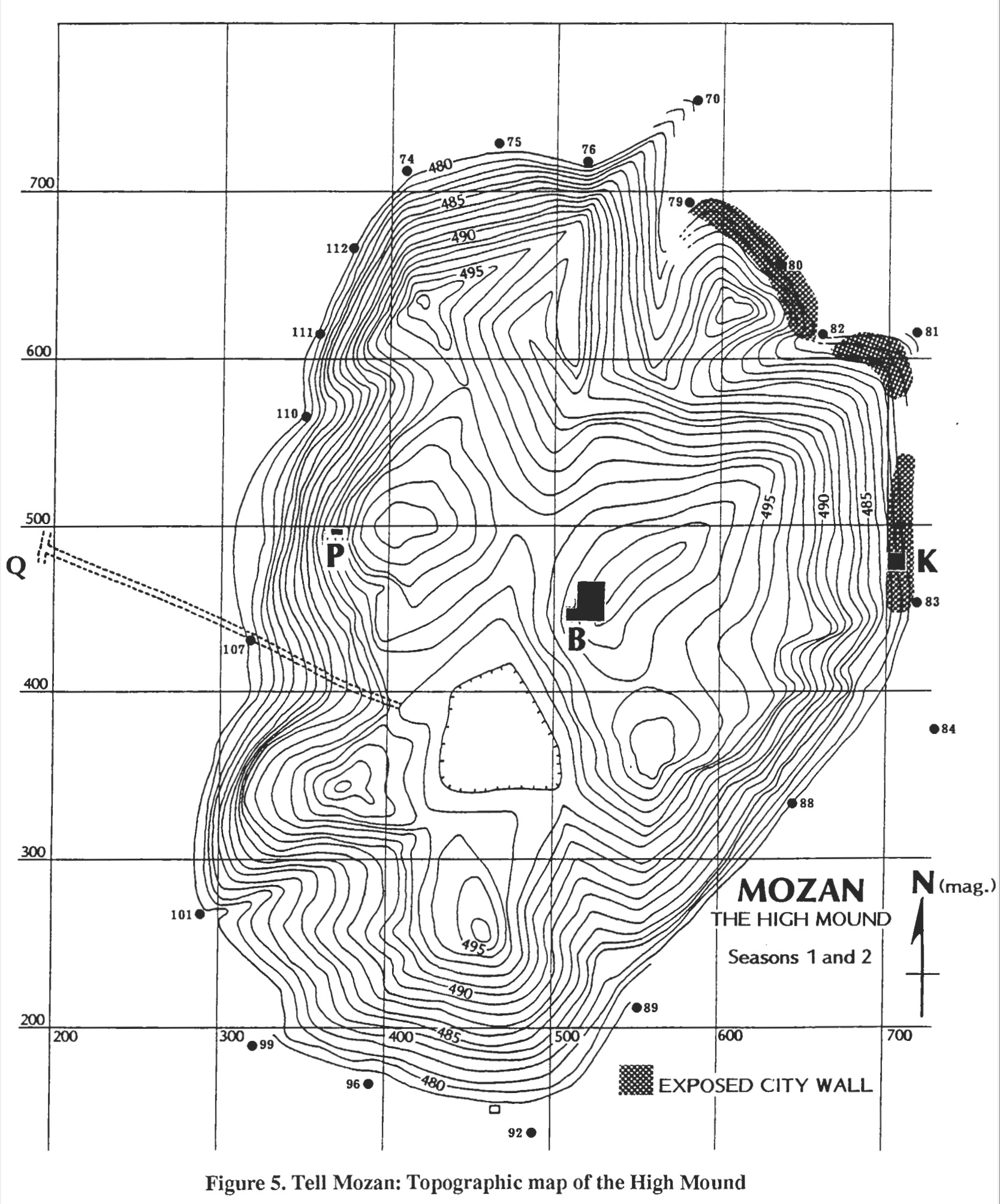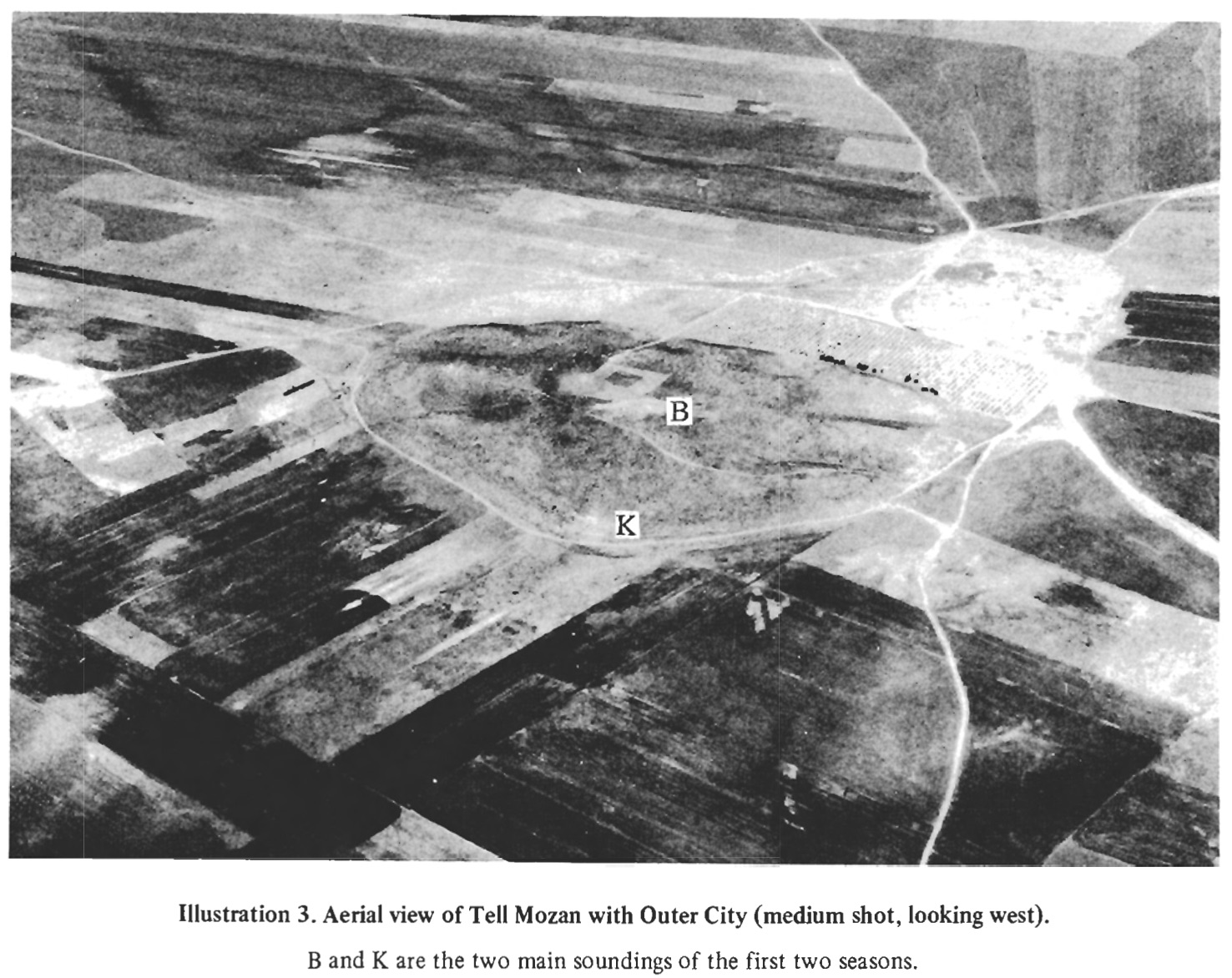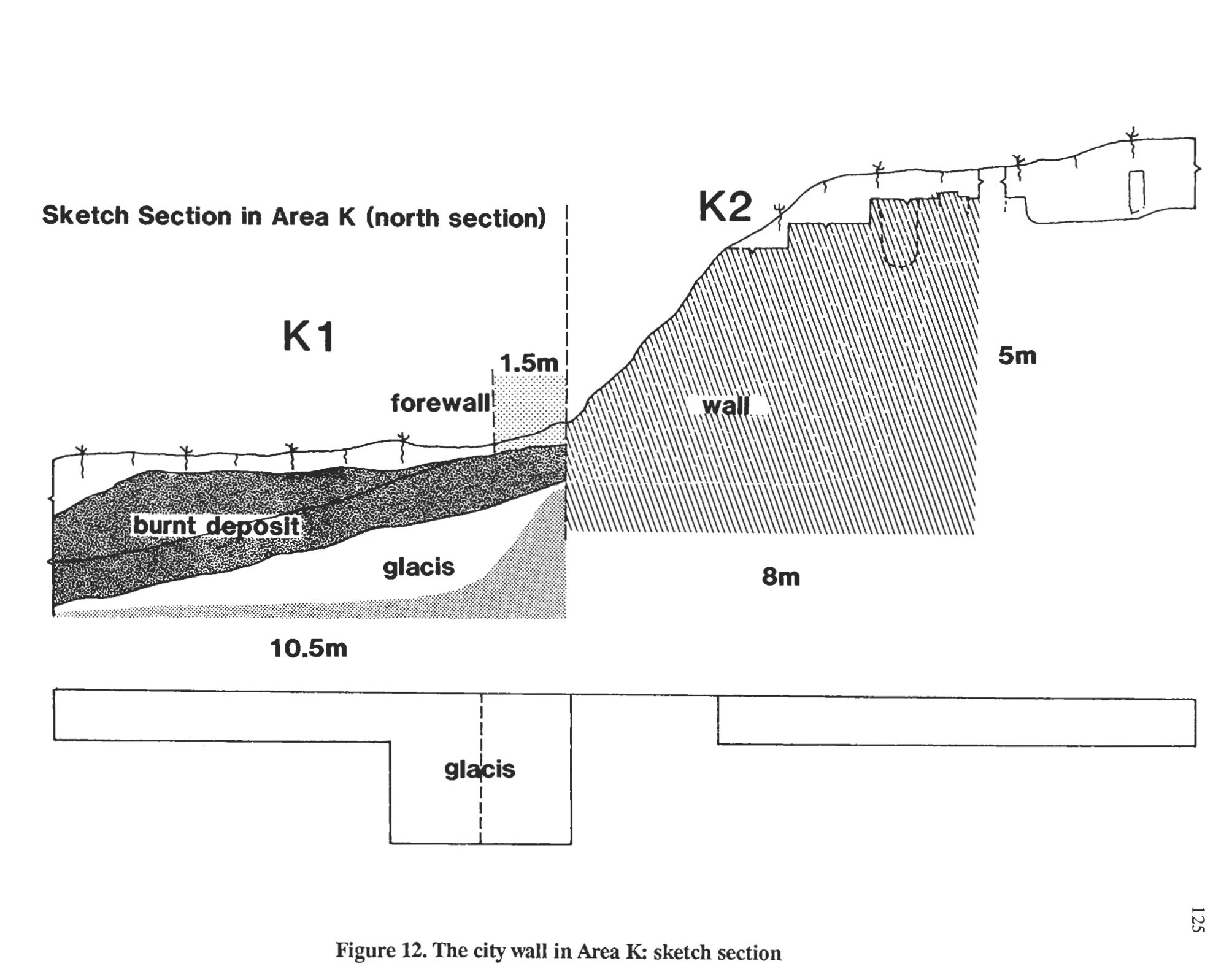Back to top: Overview of Unit K1
Introduction
Area K was one of two small areas of excavation during the first two seasons of IIMAS work at Tell Mozan, along with surface surveys on the High Mound and in the Outer City. Unit K1 was excavated in order to identify and understand the nature of the City Wall at the base of the mound. It was excavated in 1984 and 1985 with two soundings (Sondage A and B) and additional test trenches. Beyond providing information about the City Wall, K1 is particularly important for its corpus of Early Dynastic door III sealings recovered from a burnt deposit in this unit.
A preliminary report of K1 was published in Mozan 1, and much of the information that follows here is based on that report.
Back to top: Overview of Unit K1
Location
K1 is located in Area K, at the base of the eastern part of the High Mound.


Back to top: Overview of Unit K1
Excavation
Excavations were started based on visible remains on the surface. Two soundings were made in Area K in 1984:
Back to top: Overview of Unit K1
Sondage A
Also called Locus A, this was a 2 x 3 m trench placed at the base of the exterior face of the wall. This was to understand the nature of the wall, but also its associated glacis and defensive features.
Back to top: Overview of Unit K1
Sondage B
Also called Locus B, this was a 2 m wide trench placed on top of and perpendicular to the outer face of the wall, with the aim of identifying the inner face of the wall.
These excavations revealed a sequence of layers and deposits, including in K1 the burnt deposit (f16) on top of the glacis on the outside of the wall.
The inner face of the wall was not found, and in 1985 Sondage A was extended for 1 metre on either side in order to again attempt to identify the inner face, and to further expose the glacis.


Back to top: Overview of Unit K1
The burnt deposit
Feature 16 is a burnt, sealed deposit containing finds of an ED III date (glyptics and ceramics). Although this is almost certainly waste from elsewhere at the site, dumped against the city wall, it testifies to an ED III presence at Tell Mozan, and helps date the use of the wall. Read more about the deposit under topics: The burnt deposit f16 or the entry under f16.
Back to top: Overview of Unit K1
Glyptics
Forty-six sealings were found in K1, the majority from the f16 burnt layer. They are nearly all door sealings, indicating an administrative practice that included the control of access to rooms and goods. The sealings had been dumped from elsewhere on the tell, presumably originally from a formal building (temple or palace). No actual seals were found in the deposit, but their iconography indicates an overall ED III date. For more about the K1 sealings, see glyptics; for more about ED III seals at Mozan, see the ED Glyptics topical book.
Back to top: Overview of Unit K1